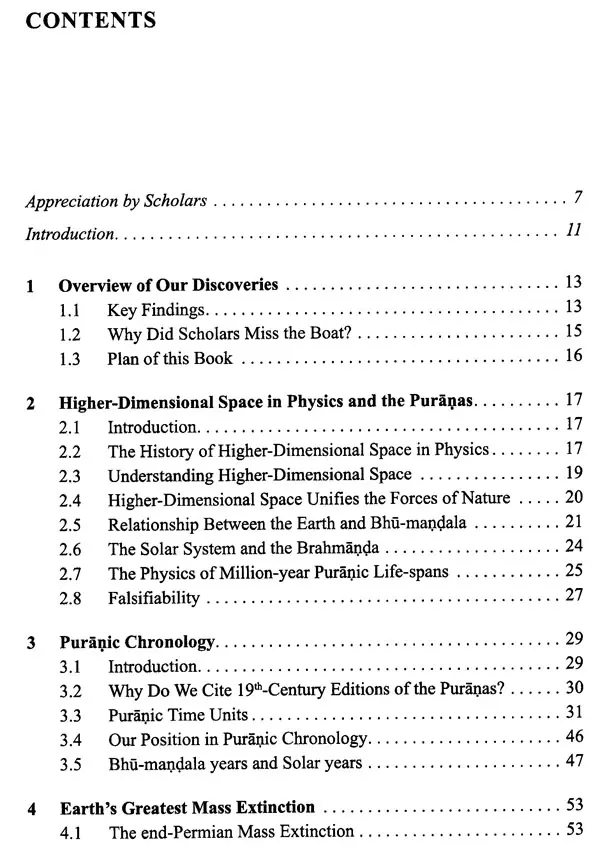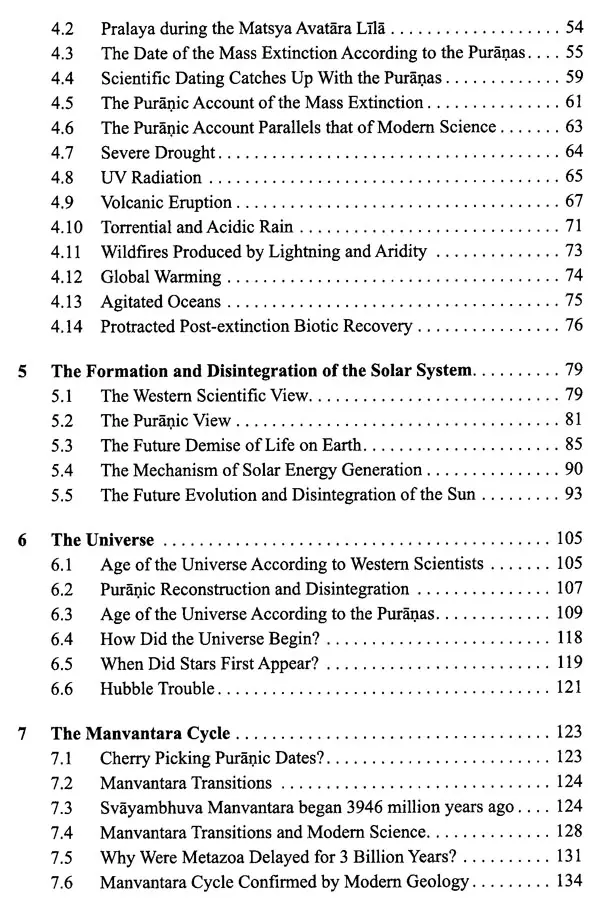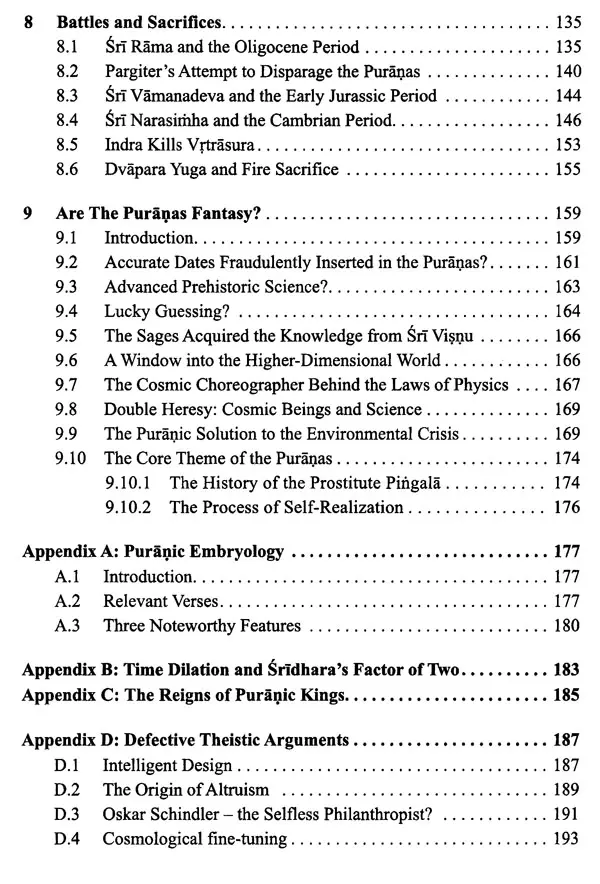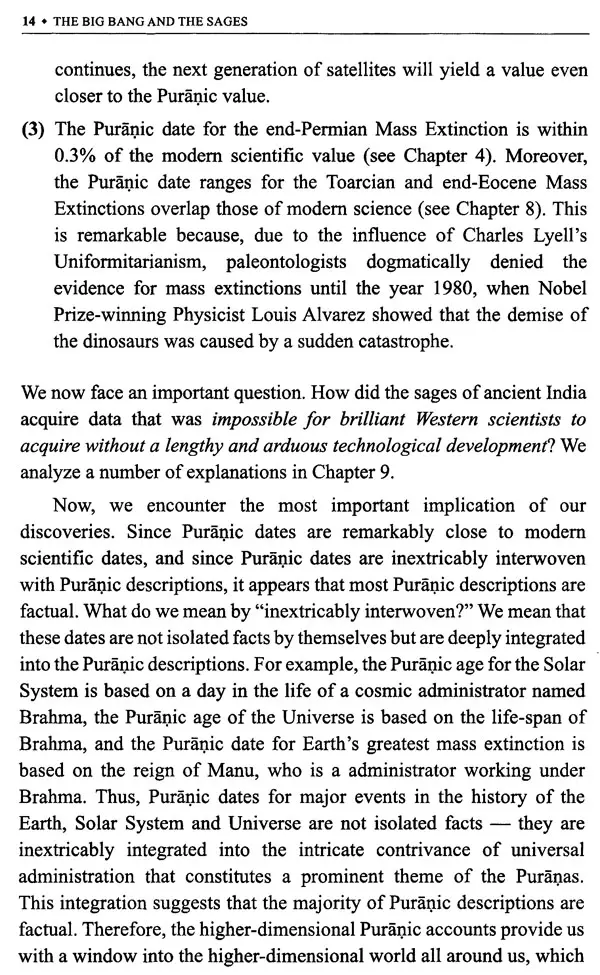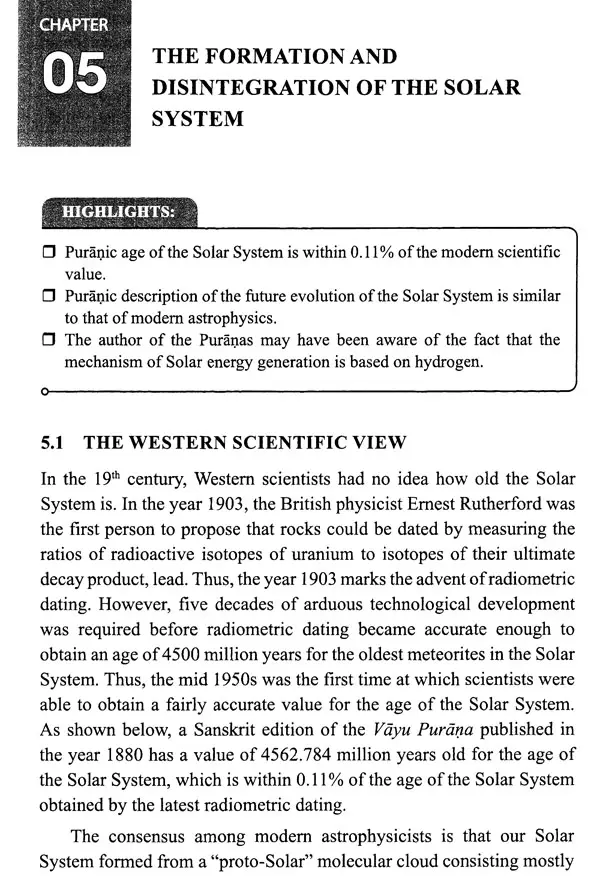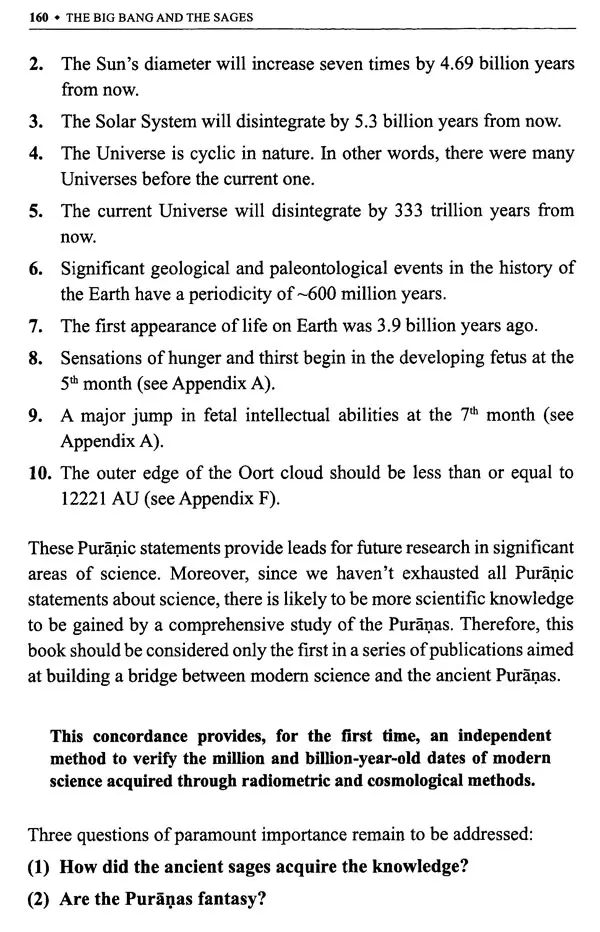
The Big Bang and The Sages- Modern Science Catches Up With The Ancient Puranas
Book Specification
| Item Code: | UAE173 |
| Author: | Sidharth Chhabra and Madhavendra Puri Das |
| Publisher: | NOTION PRESS MEDIA PVT LTD |
| Language: | English |
| Edition: | 2020 |
| ISBN: | 9781637145883 |
| Pages: | 244 (10 B/W Illustrations) |
| Cover: | PAPERBACK |
| Other Details | 9.00 X 6.00 inch |
| Weight | 310 gm |
Book Description
A century ago, Alfred Wegener was publicly humiliated, called "delirious" and diagnosed as suffering from "moving crust disease and wandering pole plague." His crime was that he proposed in The Origin of Continents and Oceans that continents drift over time. Although he was a lecturer in Meteorology and Astronomy at Marburg University, he made a bold foray into Geology. While perusing an atlas at a friend's house in the year 1910, he recognized that the east coast of South America fits into the west coast of Africa like a jigsaw puzzle.
His lack of formal training in geology didn't discourage him from pursuing this intuition. He compared the plants and animals on opposite sides of the Atlantic Ocean and recognized incontrovertible similarity between them. He also compared geological formations on both coasts, and extended his analysis to other parts of the world. The evidence strongly supported his hypothesis that all the continents move slowly, but this hypothesis was pitted against the century-old geological paradigm of fixed oceans and continents. Wegener was criticized for his lack of training in geology, his German nationality, and his "manipulation" of evidence. In short, he was labeled a heretic. Undaunted by dogmatic critics, he used this as an opportunity to improve the rigor and clarity of his arguments, and he relentlessly advocated his case. Unfortunately, he didn't live to see his work accepted. Decades later, when the old geologists had passed away, the younger ones found abundant support for Wegener's radical idea. By the early 1970s, the geological community had changed its opinion and heartily accepted Wegener's proposal. Wegener is a good example of a heretic who changed the course of science. What was heresy a century ago, is now accepted as a scientific fact.
We have written this book following in the footsteps of the courageous heretics who revolutionized Science. We make the radical proposition that the ancient Sanskrit texts, known as the Puranas, provide a comprehensive description of the history of the Universe. We discovered that the Puranas contain stunningly accurate dates for the Big Bang, the formation of the Sun, and major mass extinctions. If the evidence in this book convinces you that the Puranas are an accurate description of the history and future of the Universe, then we wish to draw your attention to the fact that the Puranas provide a comprehensive solution to the current social and environmental dilemmas. Although written thousands of years ago, the Puranas accurately portray the environmental and psychological maladies of our current day. The Puranic remedy is a sustainable lifestyle centered around the practice of meditation, as discussed in Chapter 9. We have personally benefited from this practical Puranic regimen and wish to share it with all progressive persons.
In the religion-science dialogue, the latter has captured the high ground - that is, until now. Rigorous empirical evidence, which was formerly the exclusive domain of science, is now found in the ancient Puranas. Our work demonstrates that decades of arduous technological advancement has finally brought science to the doorstep of the Puranas, which have been the same for thousands of years. Moreover, Puranic predictions about future scientific discoveries are so sophisticated that scientists are just now reaching the level of expertise required to verify them.
Some people don't take scientific work seriously unless it is published in peer-reviewed professional journals. We happily announce that an article describing our key findings has been accepted for publication in the February 2021 issue of the European Journal of Science and Theology.
**Contents and Sample Pages**
